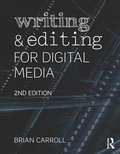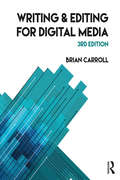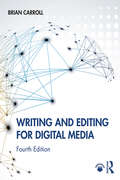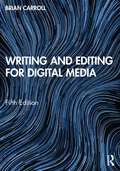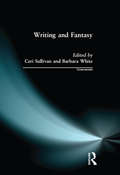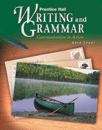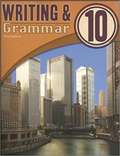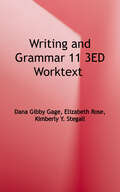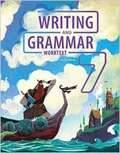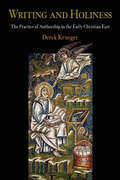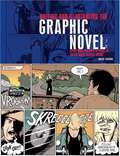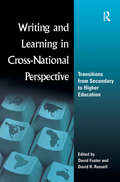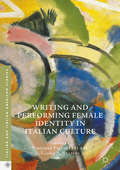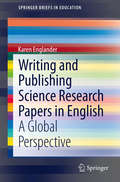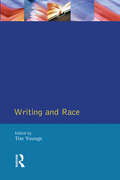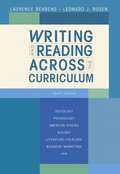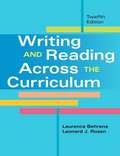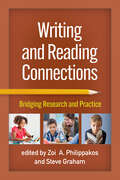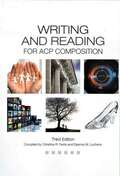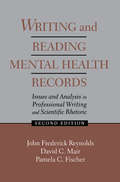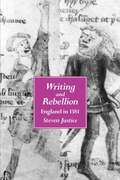- Table View
- List View
Writing and Editing for Digital Media
by Brian CarrollWriting and Editing for Digital Media, 2nd edition, teaches students how to write effectively for digital spaces--whether crafting a story for a website, blogging or using Twitter to cover a breaking news story or event. The lessons and exercises in each chapter help students build a solid understanding of the ways that digital communications have introduced opportunities for dynamic storytelling and multi-directional communication. Writing and Editing for Digital Media also addresses the graphical, multimedia, hypertextual and interactive elements that come into play when writing for digital platforms and designing digital spaces. The book teaches students not only to create content, but also to become careful, creative managers of that content. Based on Brian Carroll's extensive experience teaching the course, this revised and updated edition pays particular attention to opportunities presented by the growth of social media and mobile media. Chapters aim to: Assist digital communicators in understanding the social networked, increasingly mobile, always-on, geomapped, personalized media ecosystem; Help writers across multiple communication fields (journalism, marketing, PR, technical writing) make the transition from print to digital; Teach communicators to approach storytelling from a multimedia, multi-modal, interactive perspective. A companion website with exercises and assignments gives students the tools they need to put theory into practice.
Writing and Editing for Digital Media
by Brian CarrollWriting and Editing for Digital Media teaches students how to write effectively for digital spaces—whether writing for an app, crafting a story for a website, blogging, or using social media to expand the conversation. The lessons and exercises in each chapter help students build a solid understanding of the ways that digital communication has introduced opportunities for dynamic storytelling and multi-directional communication. With this accessible guide and accompanying website, students learn not only to create content, but also to become careful, creative managers of that content. Updated with contemporary examples and pedagogy, including examples from the 2016 presidential election, and an expanded look at using social media, the third edition broadens its scope, helping digital writers and editors in all fields, including public relations, marketing, and social media management. Based on Brian Carroll's extensive experience teaching a course of the same name, this revised and updated edition pays particular attention to opportunities presented by the growth of social media and mobile media. Chapters aim to: Assist digital communicators in understanding the socially networked, increasingly mobile, always-on, geomapped, personalized media ecosystems; Teach communicators to approach storytelling from a multimedia, multi-modal, interactive perspective; Provide the basic skill sets of the digital writer and editor, skill sets that transfer across all media and most communication and media industries, and to do so in specifically journalistic and public relations contexts; Help communicators to put their audiences first by focusing attention on user experience, user behavior, and engagement with their user bases; Teach best practices in the areas of social media strategy, management, and use.
Writing and Editing for Digital Media
by Brian CarrollIn this new edition, Brian Carroll explores writing and editing for digital media with information about voice, style, media formats, and content development, combining hands-on exercises with new sections on idea generation, multi-modal storytelling, podcasting, and information credibility. Carroll explains and demonstrates how to effectively write for digital spaces – whether crafting a story for a website, writing for an app, blogging, or using social media to expand the conversation. Each chapter features lessons and exercises through which students can build a solid understanding of the ways that digital communication provides opportunities for dynamic storytelling and multi-directional communication. Updated with contemporary examples and new pedagogy, the fourth edition broadens its scope, helping digital writers and editors in all fields, including public relations, marketing, and social media management. Writing and Editing for Digital Media is an ideal handbook for students from all backgrounds who are looking to develop their writing and editing skills for this ever-evolving industry.
Writing and Editing for Digital Media
by Brian CarrollIn this fifth edition, Brian Carroll explores writing and editing for digital media with essential information about voice, style, media formats, ideation, story planning, and storytelling. Carroll explains and demonstrates how to effectively write for digital spaces and combines hands-on, practical exercises with new material on podcasting, multi-modal storytelling, misinformation and disinformation, and writing specifically for social media. Each chapter features lessons and exercises through which students can build a solid understanding of the ways that digital communication provides opportunities for dynamic storytelling and multi-directional communication. Broadened in scope, this new edition also speaks to writers, editors, public relations practitioners, social media managers, marketers, as well as to students aspiring to these roles. Updated with contemporary examples and new pedagogy throughout, this is the ideal handbook for students seeking careers in digital media, particularly in content development and digital storytelling. It is an essential text for students of media, communication, public relations, marketing, and journalism who are looking to develop their writing and editing skills for these ever-evolving fields and professions. This book also has an accompanying eResource that provides additional weekly activities, exercises, and assignments that give students more opportunity to put theory into practice.
Writing and Fantasy (Crosscurrents)
by Ceri Sullivan Barbara WhiteWriting and Fantasy brings together essays which restore a sense of the fantastic as a political response to cultural opportunities and pressures. It moves on from two conventional fields of discussion: the psychoanalytic, where phantasies are produced by the emergence of the consciousness, and the social, where fantasies are the production of nineteenth-century individualism. Chapters run from the classical period to the twentieth century, each focusing on a local reading of how fantasy acts as a strategy to contain or exploit specific historical and cultural moments. A wide variety of sites are investigated including the feminization of the wild west, originary and maternal spaces, highwaywomen, financial credit, and the ideal home. Multiple genres containing fantasy are explored, ranging from ghost stories to feminist utopias.Aids to the reader include an introduction summarising recent discussions of fantasy, illustrations dealing with visual fantasies, and an annotated bibliography. The new research presented here will be of great interest to academics and students in literature, history and cultural studies departments who are working in the field of the historical development of concepts of fantasy, cultural opposition, and the imbrication of politics and modes of representation.
Writing and Grammar: Communication in Action (Grade #9)
by Joyce Armstrong Carroll Edward E. Wilson Gary ForliniThis books is designed to help students improve their writing skills by providing a detailed instruction process.
Writing and Grammar: Communication In Action (Gold Level)
by Joyce Armstrong Carroll Edward E. Wilson Gary ForliniWriting And Grammar: Communication In Action, Gold Level; a guide to effective, improved writing and eloquence in grammar usage. It prepares the students to a great career as it prepares the students to getting a college degree.
Writing and Grammar: Grammar Exercise Workbook Grade 6
by Prentice HallThe companion workbook for the popular language arts textbook for 6th grade students.
Writing And Grammar 10, Student Text
by Dana Gibby Gage Elizabeth Rose Kimberly Y. Stegall Bob Jones University Press StaffWriting & Grammar Grade 10 - Student Text. Teach the eight parts of speech, verbal phrases, clauses (including noun clauses), usage, and mechanics. Review the five basic sentence patterns: S-be-Advl and S-Trv-DO-OC. Reference chapters include library skills such as test-taking strategies. Lead students through the writing process and teach writing strategies such as sentence expansion and reduction, coordination and subordination, and parallelism. Writing projects include persuasive speech, editorial, eyewitness report, research essay, cause-and-effect essay, short story, poetry and metaphor, and webpage design.
Writing and Grammar 11
by Dana Gibby Gage Elizabeth Rose Kimberly Y. StegallBJU Press' Writing & Grammar 11 Student Text covers parts of speech, sentence structure, phrases, clauses, punctuation, critical responses to literature, the narrative poem, hymns, writing strategies, library and study skills, and more while emphasizing their application to writing.
Writing and Grammar 2010: Grammar Handbook
by Prentice-Hall StaffThis handy reference for writing, grammar, usage and mechanics focuses on meaningful grammar applications with grade-specific, real-world examples and lots of exercises for grammar practice.
Writing And Grammar, Grade 9: Communication In Action
by Pearson Prentice HallStep-by-Step writing process instruction and the detailed concept modeling of Prentice Hall Writing and Grammar helps students improve their writing skills.
Writing and Grammar Worktext
by Joaquim C. Remelgado MA Kristin Villalba MatThe contents of Writing and Grammar Worktext, Fourth Edition, include Sentences, Verbs, Nouns, Pronouns, Narrative Writing, Adjectives, Adverbs, Phrases, Informative Writing, Clauses, Verbals, Subject-Verb Agreement, Pronoun-Antecedent Agreement, Argumentative Writing, Pronoun Usage, Punctuation, Capitalization, Writing Project: Creating an Article.
Writing and Holiness
by Derek KruegerDrawing on comparative literature, ritual and performance studies, and the history of asceticism, Derek Krueger explores how early Christian writers came to view writing as salvific, as worship through the production of art. Exploring the emergence of new and distinctly Christian ideas about authorship in late antiquity, Writing and Holiness probes saints' lives and hymns produced in the Greek East to reveal how the ascetic call to imitate Christ's humility rendered artistic and literary creativity problematic. In claiming authority and power, hagiographers appeared to violate the saintly practices that they sought to promote. Christian writers meditated within their texts on these tensions and ultimately developed a new set of answers to the question "What is an author?"Each of the texts examined here used writing as a technique for the representation of holiness. Some are narrative representations of saints that facilitate veneration; others are collections of accounts of miracles, composed to publicize a shrine. Rather than viewing an author's piety as a barrier to historical inquiry, Krueger argues that consideration of writing as a form of piety opens windows onto new modes of practice. He interprets Christian authors as participants in the religious system they described, as devotees, monastics, and faithful emulators of the saints, and he shows how their literary practice integrated authorship into other Christian practices, such as asceticism, devotion, pilgrimage, liturgy, and sacrifice. In considering the distinctly literary contributions to the formation of Christian piety in late antiquity, Writing and Holiness uncovers Christian literary theories with implications for both Eastern and Western medieval literatures.
Writing and Illustrating the Graphic Novel: Everything You Need to Know to Create Great Graphic Works
by Mike ChinnDramatized sequential illustrations with dialogue—an art form once confined to production of comic strips and comic books—has recently graduated into the popular, fast-growing, and often financially rewarding genre of the graphic novel. Writing and Illustrating the Graphic Novel is an authoritative instruction manual suitable for formal art class or for self teaching on the part of ambitious self-starters. Beginners who have artistic and storytelling aptitudes learn the basics of graphic novel creation, from first conception of a story idea to publication of a professionally produced book. An introductory chapter describes the widely differing graphic novel sub-genres and the appropriate styles for each. They include superhero, gothic tale, adventure/action story, sci-fi, crime story, and literary fiction. A succeeding chapter discusses and shows examples of picture panels, speech bubbles, layout, and characterization of works in progress. Subsequent chapters offer advice on finding inspiration for stories and explanation of the technique of writing for graphic novels. A variety of illustration and layout styles are shown with reference to ways in which each fits a different sub-genre. A final chapter presents practical tips on getting a graphic novel published. More than 400 illustrations take students step-by-step through the process of creating a graphic novel.
Writing and Learning in Cross-national Perspective: Transitions From Secondary To Higher Education
by David Foster David R. RussellDespite the increasingly global implications of conversations about writing and learning, U.S. composition studies has devoted little attention to cross-national perspectives on student writing and its roles in wider cultural contexts. Caught up in our own concerns about how U.S. students make the transition as writers from secondary school to postsecondary education, we often overlook the fact that students around the world are undergoing the same evolution. How do the students in China, England, France, Germany, Kenya, or South Africa--the educational systems represented in this collection--write their way into the communities of their chosen disciplines? How, for instance, do students whose mother tongue is not the language of instruction cope with the demands of academic and discipline-specific writing? And in what ways is U.S. students' development as academic writers similar to or different from that of students in other countries? With this collection, editors David Foster and David R. Russell broaden the discussion about the role of writing in various educational systems and cultures. Students' development as academic writers raises issues of student authorship and agency, as well as larger issues of educational access, institutional power relations, system goals, and students' roles in society. The contributors to this collection discuss selected writing purposes and forms characteristic of a specific national education system, describe students' agency as writers, and identify contextual factors--social, economic, linguistic, cultural--that shape institutional responses to writing development. In discussions that bookend these studies of different educational structures, the editors compare U.S. postsecondary writing practices and pedagogies with those in other national systems, and suggest new perspectives for cross-national study of learning/writing issues important to all educational systems. Given the worldwide increase in students entering higher education and the endless need for effective writing across disciplines and nations, the insights offered here and the call for further studies are especially welcome and timely.
Writing and Performing Female Identity in Italian Culture
by Virginia Picchietti Laura A. SalsiniThis volume investigates the ways in which Italian women writers, filmmakers, and performers have represented female identity across genres from the immediate post-World War II period to the turn of the twenty-first century. Considering genres such as prose, poetry, drama, and film, these essays examine the vision of female agency and self-actualization arising from women artists' critique of female identity. This dual approach reveals unique interpretations of womanhood in Italy spanning more than fifty years, while also providing a deep investigation of the manipulation of canvases historically centered on the male subject. With its unique coupling of generic and thematic concerns, the volume contributes to the ever expanding female artistic legacy, and to our understanding of postwar Italian women's evolving relationship to the narration of history, gender roles, and these artists' use and revision of generic convention to communicate their vision.
Writing and Publishing Science Research Papers in English
by Karen EnglanderThis book provides a comprehensive review of the current knowledge on writing and publishing scientific research papers and the social contexts. It deals with both English and non-Anglophone science writers, and presents a global perspective and an international focus. The book collects and synthesizes research from a range of disciplines, including applied linguistics, the sociology of science, sociolinguistics, bibliometrics, composition studies, and science education. This multidisciplinary approach helps the reader gain a solid understanding of the subject. Divided into three parts, the book considers the context of scientific papers, the text itself, and the people involved. It explains how the typical sections of scientific papers are structured. Standard English scientific writing style is also compared with science papers written in other languages. The book discusses the strengths and challenges faced by people with different degrees of science writing expertise and the role of journal editors and reviewers.
Writing and Race (Crosscurrents)
by Tim YoungsWriting and Race brings together specially commissioned essays by new and established authors from a range of disciplines. Texts are drawn from subjects and genres that include philosophy, politics, anthropology, sexuality, travel, fiction and autobiography. Through a time-span from Ancient Greece to the present day, and a geographical coverage from Australia and Europe to the Caribbean and the United States, the collection investigates the importance of place, moment, cultural formation and subject identity in racial representation. A substantial introduction establishes the connections between the essays and lucidly summarizes recent thinking on race, explaining in particular the relevance of debates about ethnography.Accessible and stimulating, Writing and Race is a multidisciplinary collection that will be of interest to students, researchers, and lecturers who study or are interested in race. The essays represent a variety of critical approaches, thus allowing the reader to compare and contrast the benefits of each approach. Extracts of some of the texts that are discussed are included along with an extensive bibliography to encourage further study.
Writing and Reading Across the Curriculum, 10th Edition
by Laurence Behrens Leonard J. RosenWriting and Reading Across the Curriculum, 10th Edition is an 880 page best selling college rhetoric and reader written by the distinguished writing authorities Laurence Behrens and Leonard J. Rosen. Many colleges and universities will begin using the tenth edition in the Fall of 2007. In addition to bibliographical references and an index, the textbook has seven chapters on the techniques for academic writing and seven chapters of readings on popular interdisciplinary themes. In the preface, the authors provide the following explanation of the book's concept: With this tenth edition, Writing and Reading Across the Curriculum reaches a milestone: its twenty-fifth year in print. When WRAC was first published in 1982, it was-viewed from one angle-an experiment. We hoped to prove our hypothesis that both students and teachers would respond favorably to a composition reader organized by the kinds of specific topics that were typically studied in general education courses. In the present edition, we add a new chapter, "Practicing Academic Writing," to Part I of the text, providing students the opportunity to use the skills they have learned in summary, critique, synthesis, and analysis to write a sequence of brief papers that lead to a fully developed, source-based argument. In developing each edition of WRAC, we have been guided by the same principle: to retain the essential multidisciplinary character of the text while providing ample new topics and individual readings to keep it fresh and timely. Some topics have proven particularly enduring-our "Cinderella" and "Obedience" chapters have been fixtures of WRAC since the first edition. But we take care to make sure that at least a third of the book is completely new every time, both by extensively revising existing chapters and' by creating new ones. Over ten editions, our discussion of rhetoric has expanded to seven chapters. While we have retained an emphasis on summary, critique, and synthesis-and now, analysis-we continue to develop content on such issues as the process of writing and argumentation that addresses the issues and interests of today's classrooms.
Writing and Reading Across the Curriculum (Twelfth Edition)
by Laurence Behrens Leonard J. RosenRemaining one of the best-selling interdisciplinary composition texts for over twenty-five years, Writing and Reading Across the Curriculum helps readers learn to write effectively for college.
Writing and Reading Connections: Bridging Research and Practice
by Zoi A. Philippakos Steve GrahamWriting skills are essential for success in the 21st-century school and workplace, but most classrooms devote far more time to reading instruction, with writing often addressed in isolation or excluded. In this insightful professional development resource and text, leading researchers discuss why and how to integrate writing and reading instruction in grades K–12 and beyond. Contributors explore how to harness writing–reading connections to support learning in such areas as phonics and spelling, vocabulary, understanding genre and text structure, and self-regulated strategy development, as well as across content areas and disciplines. Special considerations in teaching emergent bilingual students and struggling literacy learners are described. User-friendly features include guiding questions, classroom examples, and action questions that help teachers translate the research and concepts into practice.
Writing and Reading Mental Health Records: Issues and Analysis in Professional Writing and Scientific Rhetoric
by J. Frederick Reynolds David C. Mair Pamela C. FischerThis revised and updated second edition is a rhetorical analysis of written communication in the mental health community. As such, it contributes to the growing body of research being done in rhetoric and composition studies on the nature of writing and reading in highly specialized professional discourse communities. Many compelling questions answered in this volume include: * What "ideological biases" are reflected in the language the nurse/rhetorician uses to talk to and talk about the patient? * How does language figure into the process of constructing meaning in this context? * What social interactions -- with the patient, with other nurses, with physicians -- influence the nurse's attempt to construct meaning in this context? * How do the readers of assessment construct their own meanings of the assessment? Based on an ongoing collaboration between composition studies specialists and mental health practitioners, this book presents research of value not only to writing scholars and teachers, but also to professional clinicians, their teachers, and those who read mental health records in order to make critically important decisions. It can also be valuable as a model for other scholars to follow when conducting similar long-range studies of other writing-intensive professions.
Writing and Rebellion: England in 1381 (The New Historicism: Studies in Cultural Poetics #27)
by Steven JusticeIn this compelling account of the "peasants' revolt" of 1381, in which rebels burned hundreds of official archives and attacked other symbols of authority, Steven Justice demonstrates that the rebellion was not an uncontrolled, inarticulate explosion of peasant resentment but an informed and tactical claim to literacy and rule.Focusing on six brief, enigmatic texts written by the rebels themselves, Justice places the English peasantry within a public discourse from which historians, both medieval and modern, have thus far excluded them. He recreates the imaginative world of medieval villagers—how they worked and governed themselves, how they used official communications in unofficial ways, and how they produced a disciplined insurgent ideology.
